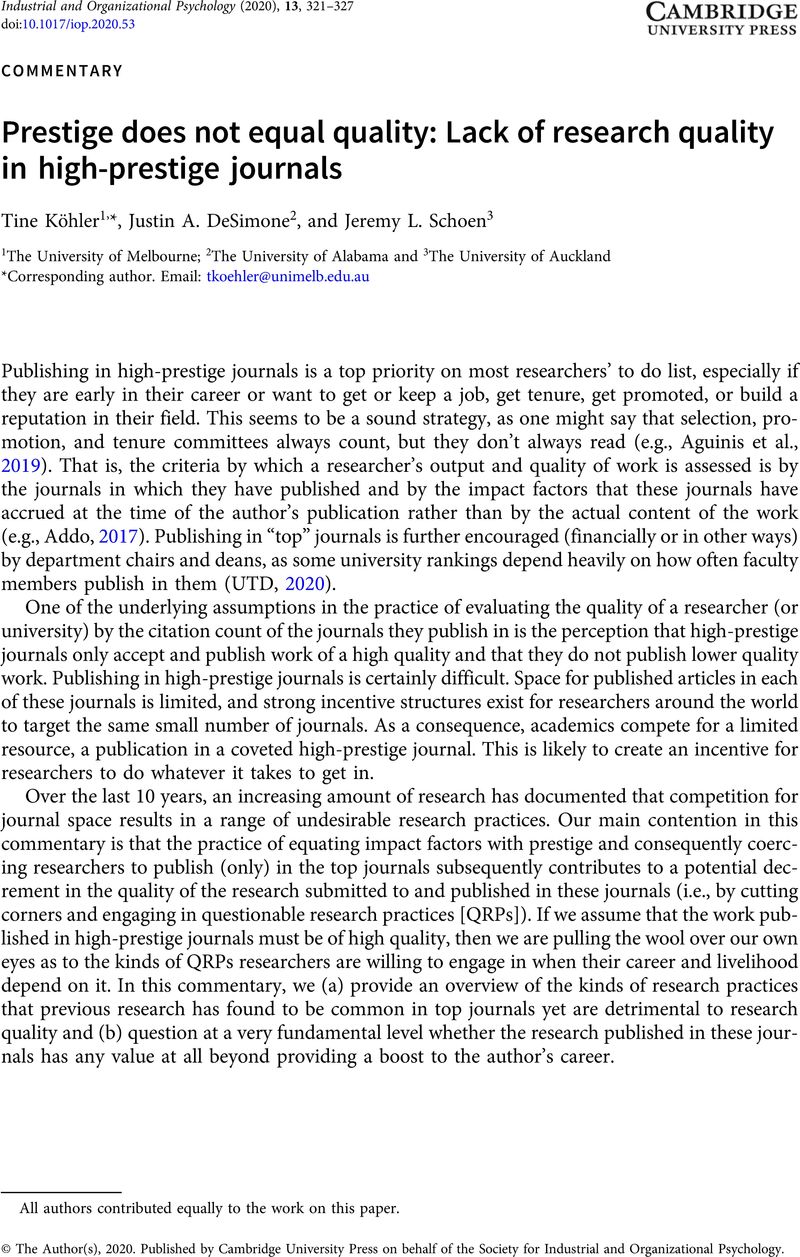Crossref Citations
This article has been cited by the following publications. This list is generated based on data provided by Crossref.
Bruton, Garry D.
and
Chen, Juanyi
2022.
Bringing entrepreneurship and family business fully into a home in management departments.
Journal of Family Business Strategy,
Vol. 13,
Issue. 1,
p.
100483.
Brinkerink, Jasper
2023.
When Shooting for the Stars Becomes Aiming for Asterisks: P-Hacking in Family Business Research.
Entrepreneurship Theory and Practice,
Vol. 47,
Issue. 2,
p.
304.
Andersen, Jens Peter
Horbach, Serge P. J. M.
and
Ross-Hellauer, Tony
2024.
Through the secret gate: a study of member-contributed submissions in PNAS.
Scientometrics,
Vol. 129,
Issue. 9,
p.
5673.
Demeter, Marton
Goyanes, Manuel
Kohus, Zsolt
and
de Zúñiga, Homero Gil
2025.
Exploring the link between research funding, co-authorship and publication venues: an empirical study in communication, political science, and sociology.
Online Media and Global Communication,
Vol. 4,
Issue. 1,
p.
60.



